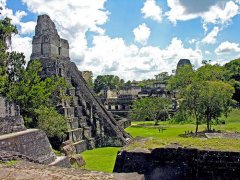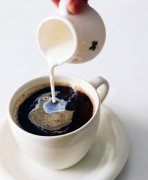Nekisse Coffee Bean producing area: Cedama Sidama
Nekisse is the third 90 + bean found by Ninety Plus after Aricha and Beloya in 2010. And got the highest score of 96 on Coffee Review for that year (the following materials are mostly taken from the website of Ninety Plus).

Nekisse's raw bean smell is so special that when you open the bag, you will be shocked by its strong wine smell. As for the taste, maybe you need a process. If you are used to drinking washed Essex beans such as Yega Snow Coffee, which are common in China, you may not like this sun-dried espresso for the first time, but after drinking it a few times, you will definitely be fascinated by this amazing fruit coffee! In a cafe in New York, it was even sold for $12 a cup.
Nekisse is from Shakisso. as early as 2008, Ninety Plus specially processed a bag of Shakisso coffee, which was described at the time as "strong fruit (strawberry jam), cinnamon, flowers, chocolate, apricot peaches", so Ninety Plus decided to develop a tracking program in the area, and by the end of 2009, highly dense apricots and spices were significantly enhanced and went on the market in the spring of 2010.
The taste of Nekisse focuses on understated and elegant, its depth can not be small, and its rich taste is its charm!
Because it is located at very high altitude, the bean shape is small, but the sweetness is very high (usually high altitude beans, high acidity), it does not taste like Aricha, Beloya, the perfumed fruit (perfumed fruit) (effusive), but if you put aside the wet powder cooked by Nekisse, you
You will smell a very strong and complex flavor of spices (spicy notes), which can be clearly felt when drinking slowly, so the change of Nekisse in cooling is its strength.
Another feature is the subtle change of taste over time after baking. In terms of shallow baking, from 3 to 5 days of sweetness, to 7 to 10 days of juice, to more than 12 days of sour wine.
It is said that Nekisse performs well in both deep baking and light baking, but there is a great difference in flavor and taste. In short, shallow baking: sweet floral aroma (sweet floral aroma), large granulated fruit fruit (big berry), fruit juice sweet (juicy sweetness), honey tail (honey-like aftertaste), bitter sweet spice (bitter-sweet spice) Deep baking: brand-toned fruit aroma with wine, blackberry (similar to strawberry after exhaust), citrus and brandysh acidity (citrus, bergamot & brandysh acidity), consistency (syrupy mouthfeel), sweet chocolate (semi-sweet chocolate). However, I have never liked deep baking, and this bean has never been deeply baked.
Product name: Nekisse coffee beans
Origin: Aleta Wondo,Sidama (Ninety Plus Co.)
Altitude: 1700-2000 m
Variety: Mixed Heirloom
Treatment: solarization (N2)
Flavor characteristics: strawberry, peach, citrus, cream, passionflower and other fruits
Aroma: 9
Acidity: 8
Thickness: 8
Flavor: 10
Yu Yun: 9
Baking degree: moderate
Packing: 200g (2 bags, 100g / bag)
Suggested production method: hand punching
Degree of grinding: fineness of sugar (Fuji Ghost Tooth Mill 33.5)
Water temperature: about 93-96 degrees
Powder / water ratio: 1: 15: 20 (I usually take the intermediate value of 1:17 or 18)
Soak time: 3-4 minutes (it is recommended that you use no less than 15 grams of powder for each hand flush)
Water quality: colorless, no odor, TDS tester reading: 150PPM
PS: Gima, Sidama and Sidama are the three major coffee producing areas. In 2005, Gima produced 26743 tons of coffee, accounting for 23.2% of the state and 11.8% of the country.
Important Notice :
前街咖啡 FrontStreet Coffee has moved to new addredd:
FrontStreet Coffee Address: 315,Donghua East Road,GuangZhou
Tel:020 38364473
- Prev

Common sense of Coffee characteristics of Coffee in eight producing areas of Guatemala
The Ekatra Valley rises to 2000 meters (6500 feet), with dense shade and unique ecology, and the nearby Fuego volcano erupts, making its coarse, sandy soil rich in a variety of minerals. Temperate sea breezes from the Pacific and a seasonal climate allow coffee in this region to be dried by sunlight and processed according to traditional family methods that have been accumulated over the years. [characteristics]
- Next

Kopi Luwak and Kopi Luwak is a traditional specialty of Indonesia
Kopi Luwak is a traditional specialty in some Indonesian islands, such as Java, Sumatra, Bali and Sulawesi. The civet only contains this unique coffee in its feces after eating the local coffee cherry fruit. In fact, the official name of Kopi Luwak is Kopi Luwak. Kopi means coffee in Indonesian and Luwak is a kind of seal.
Related
- Detailed explanation of Jadeite planting Land in Panamanian Jadeite Manor introduction to the grading system of Jadeite competitive bidding, Red bid, Green bid and Rose Summer
- Story of Coffee planting in Brenka region of Costa Rica Stonehenge Manor anaerobic heavy honey treatment of flavor mouth
- What's on the barrel of Blue Mountain Coffee beans?
- Can American coffee also pull flowers? How to use hot American style to pull out a good-looking pattern?
- Can you make a cold extract with coffee beans? What is the right proportion for cold-extracted coffee formula?
- Indonesian PWN Gold Mandrine Coffee Origin Features Flavor How to Chong? Mandolin coffee is American.
- A brief introduction to the flavor characteristics of Brazilian yellow bourbon coffee beans
- What is the effect of different water quality on the flavor of cold-extracted coffee? What kind of water is best for brewing coffee?
- Why do you think of Rose Summer whenever you mention Panamanian coffee?
- Introduction to the characteristics of authentic blue mountain coffee bean producing areas? What is the CIB Coffee Authority in Jamaica?

